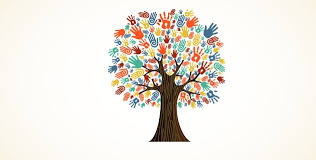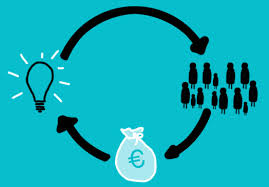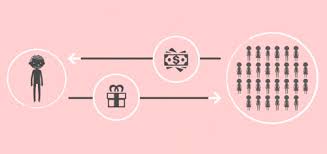•Crowdsourcing is the process of getting work or funding, usually online, from a crowd of people. The word is a combination of the words ‘crowd’ and ‘outsourcing’. The idea is to take work and outsource it to a crowd of workers.
•Famous Example: Wikipedia : Instead of Wikipedia creating an encyclopedia on their own, hiring writers and editors, they gave a crowd the ability to create the information on their own.
•Quality: By canvassing a large crowd of people for ideas, skills, or participation, the quality of content and idea generation will be superior.
•Jeff Howe, editor of Wired magazine, first coined the term “crowdsourcing” in a June 2006 article.
•Possibly the earliest example of crowdsourcing is the collection of words for the Oxford English Dictionary. In 1858, a group called the Philological Society contracted with over 800 volunteer readers to collect words from all available books and document their usages. Subsequently, the group solicited broader public input and received over six million submissions over the 70 years of the project.
Strong Spots
•Crowdsourcing increases the productivity of a company while minimizing labor expenses. The Internet is a time-proven strategy for soliciting feedback from an active and passionate consumer base.
•Companies utilize crowdsourcing not only in a research and development capacity, but also for marketing, creating content and giving feedback.
Weak Spots
•Crowds are not employees, so executives can’t expect to control them. They will demand time, attention, patience, good listening skills, transparency, and honesty.
•It is unlike working in traditional style.
Different Types of Crowdsourcing
Crowdsource Design
•If you’re looking for a logo design, you can tell a crowd of designers what you want, how much you will pay, and your deadline. All interested designers will create a finished design specifically for you.
Crowdsourcing can also be used to get designs for furniture, fashion, advertisements, video, & product design.
Microtasks
•Micro tasking involves breaking work up into tiny tasks and sending the work to a crowd of people. If you have 1,000 photos on your website that need captions, you can ask 1,000 individual people to each add a caption to one photo. Break up the work and decide the payment for each completed task.Work is done faster, cheaper, and usually with less Innovation.
Open Innovation
•Open innovation allows people from all aspects of business such as investors, designers, inventors, and marketers to collaborate into a functional profit making reality. This can be done either through a dedicated web platform to gain outside perspective, or used with only internal employees.
•Open innovation brings together people from different parts of the world and different sectors of business to work together on a project.
Crowd Funding
•Crowdfunding is asking a crowd of people to donate a defined amount of money for a specific cause or project in exchange for various rewards.
There are three general categories :
•Equity-based is asking a crowd to donate to your business or project in exchange for equity.
•Donation-based is asking a crowd to donate to your project in exchange for tangible, non-monetary rewards such as an ecard, t-shirt, pre-released CD, or the finished product.
•Debt-based is asking a crowd to donate to your business or business project in exchange for financial return and/or interest at a future date.
•There are numerous crowdfunding platforms where consumers can safely ask for or donate money such as Kickstarter, Indiegogo, RocketHub.
•Project creators can create a profile typically containing a short video, an introduction to their project, a list of rewards per donation, and some images to elaborate.
•Each campaign is set for a goal amount of money and a fixed number of days. Once the project is launched, each day will be counted down and the money raised will be tallied up for visitors to follow its success.
•Instead of traditional investors, crowdfunding campaigns are funded by the general public. Typically, most successful projects receive about 25-40% of their revenue from their first, second and third degree of connections. This could include friends, family, work acquaintances, or anyone that the owner is connected to, including their second and third degree connections. Once a project has seen some traction, unrelated consumers start coming out of the woodwork to support campaigns they believe in.
The Good
•Crowdfunding is useful for a variety of opportunities, whether fundraising for disaster-relief, creative projects, creating a salable product, or creating a start-up.
•Crowdfunding platforms allow you to market your project, generate interest, and receive funds.
•Crowdfunding backers can provide useful feedback about your project.
The Bad
•Crowdfunding your project exposes your ideas to potential copycats.
•These platforms may limit the amount of funds you can receive.
•Crowdfunding regulations and taxation can be difficult to work with.
References : dailycrowdsource.com ; forbes














One thought on “Crowd Sourcing & Crowd Funding”